Probability Questions Answers
Worked-out probability questions answers are given here step-by-step to get the clear explanation to the student.
1. Out of 300 students in a school, 95 play cricket only, 120 play football only, 80 play volleyball only and 5 play no games. If one student is chosen at random, find the probability that
(i) he plays volleyball
(ii) he plays either cricket or volleyball
(iii) he plays neither football nor volleyball.
Solution:
Total number of trials = 300 (Since there are 300 students all together).
Number of times a cricket player is chosen = 95 (Since 95 students play cricket).
Number of times a football player is chosen = 120.
Number of times a volleyball player is chosen = 80.
Number of times a student is chosen who plays no games = 5.
(i) Therefore, the probability of getting a player who plays volleyball
= Number of Times a Volleyball Player can be ChosenTotal Number of Trials
= 80300
= 415.
(ii) The probability of getting a player who plays either cricket or volleyball
= Number of Times a Cricket or a Volleyball Player can be ChosenTotal Number of Trials
= 95+80300
= 175300
= 712.
(iii) The probability of getting a player who plays neither football nor volleyball = Number of Times a Student can be Chosen who do not Play Football or VolleyballTotal Number of Trials
= 300–120−80300
= 100300
= 13.
2. The blood group of 60 students of a class recorded as below.
|
Blood Group |
A |
B |
AB |
O |
|
Number of Students |
12 |
20 |
10 |
18 |
A student of the class is selected at
random.
(i) What is the probability that the selected student has blood group O?
(ii) What is the probability that the selected student does not have blood group O?
Solution:
(i) Total number of trials = 60. [Since, there are 60 different students).
Number of students having blood group O = 18.
So, the probability of the student’s blood group being O
= Frequency of Favourable TrialsTotal Number of Trials
= Number of Students having Blood Group OTotal Number of Trials
= 1860
= 310.
(ii) Total number of trials = 60. [Since, there are 60 different students).
Number of students not having blood group O = Total Number of Students - Number of Students having Blood Group O = 60 – 18 = 42.
So, the probability of the student’s blood group being different from O
= Number of Students not having Blood Group OTotal Number of Trials
= 4260
= 710.
Note: Probability of the student’s blood group not being O = 310 + 710 = 1.
3. In a test of 100 marks, the marks scored by the students of a class are given below.
A student of the class is selected at random. Find the probability that the student has scored
(i) less than 30
(ii) at least 60
(iii) not less than 80.
Solution:
(i) Total number of trials = 80 [Since there are 80 students all together].
Number of students scoring less than 30 = Cumulative frequency of the interval 20 – 30 = 1 + 3 + 6 = 10.
So, the probability of the student scoring less than 30
= Frequency of Favourable TrialsTotal Number of Trials
= Number of Students Scoring Less than 30Total Number of Students
= 1080
= 18.
(ii) Total number of trials = 80.
Number of students scoring at least 60 = Number of students scoring more than or equal to 60
= 12 + 5 + 4 + 1 (= Sum of frequencies of the intervals 60 – 70, 70 – 80, 80 – 90, 90 – 100)
= 22.
So, the required probability = Frequency of Favourable TrialsTotal Number of Trials
= Number of Students Scoring at least 60Total Number of Students
= 2280
= 1140.
(iii) Total number of trials = 80.
Number of students scoring at not less than 80 = Number of students scoring to least 80
= 4 + 1 (= Sum of frequencies of the intervals 80 – 90 and 90 – 100)
= 5.
Therefore, the required probability = Number of Students Scoring not less than 80Total Number of Students
= 580
= 116.
4. A bag contains 8 red balls and some white balls. If the probability of drawing a white ball is half of the probability of drawing a red ball then find the number of white balls in the bag.
Solution:
Let the number of white balls be n.
The number of red balls = 8.
Therefore, the possible number of outcomes = n + 8.
Now, the probability of drawing a white ball = nn+8.
The probability of drawing a red ball = 8n+8.
Now, from question,
nn+8 = 12 ∙ nn+8
or, n = 4.
So, number of white balls in the bag is 4.
5. A box contains 90 discs numbered 1 to 90. One disc is drawn at random from the box. What is the probability that is bears
(i) a two-digit number
(ii) a perfect square
(iii) a multiply of 5
(iv) a number divisible by 3 and 5.
Solution:
(i) Total number of possible outcomes = 90 (Since the disks are numbered from 1 to 90).
Number of favourable outcomes of the event E
= Number of two-digit numbers from 1 to 90
= 90 - 9 = 81 (Since all are two-digit numbers except 1 to 9)
Therefore, P(E) = Number of Favourable Outcomes of the Event ETotal Number of Possible Outcomes
= 8190
= 910.
(ii) Total number of possible outcomes = 90.
Number of favourable outcomes of the event F
= Number of perfect squares from 1 to 90
= 9 [Since 1, 4, 9, 16, 25, 36, 49, 64 and 81 are perfect squares).
Therefore, by definition, P(F) = 990
= 110.
(iii) Total number of possible outcomes = 90.
Number of favourable outcomes of the event G
= Number of multiples of 5 among numbers from 1 to 90
= 18 [Since 5 × 1, 5 × 2, 5 × 3, ...., 5 × 18 are multiple of 5).
Therefore, by definition, P(G) = 1890
= 15.
(iv) Total number of possible outcomes = 90.
Number of favourable outcomes of the event H
= Number of numbers divisible by 3 and 5 from 1 to 90
= Number of numbers divisible by 15 from 1 to 90
= 6 [Since 15 × 1, 15 × 2, 15 × 3, ...., 15 × 6 are divisible by 15).
Therefore, by definition, P(H) = 690
= 115.
● Probability
- Probability
- Definition of Probability
- Random Experiments
- Experimental Probability
- Events in Probability
- Empirical Probability
- Coin Toss Probability
- Probability of Tossing Two Coins
- Probability of Tossing Three Coins
- Complimentary Events
- Mutually Exclusive Events
- Mutually Non-Exclusive Events
- Conditional Probability
- Theoretical Probability
- Odds and Probability
- Playing Cards Probability
- Probability and Playing Cards
- Probability Rolling a Die
- Probability for Rolling Two Dice
- Probability for Rolling Three Dice
- Solved Probability Problems
- Probability Questions Answers
From Probability Questions Answers to HOME PAGE
Didn't find what you were looking for? Or want to know more information about Math Only Math. Use this Google Search to find what you need.
Recent Articles
-
Subtraction of Decimals | Subtracting Decimals | Decimal Subtraction
Apr 24, 25 03:25 PM
We will discuss here about the subtraction of decimals. Decimals are subtracted in the same way as we subtract ordinary numbers. We arrange the digits in columns -
How to Do Long Division? | Method | Steps | Examples | Worksheets |Ans
Apr 24, 25 10:18 AM
As we know that the division is to distribute a given value or quantity into groups having equal values. In long division, values at the individual place (Thousands, Hundreds, Tens, Ones) are dividend… -
Division by Two-Digit Numbers | Knowledge of Estimation | Division
Apr 24, 25 10:12 AM
In division by two-digit numbers we will practice dividing two, three, four and five digits by two-digit numbers. Consider the following examples on division by two-digit numbers: Let us use our knowl… -
Addition of Decimals | How to Add Decimals? | Adding Decimals|Addition
Apr 24, 25 01:45 AM
We will discuss here about the addition of decimals. Decimals are added in the same way as we add ordinary numbers. We arrange the digits in columns and then add as required. Let us consider some -
Addition of Like Fractions | Examples | Videos | Worksheet | Fractions
Apr 23, 25 09:23 AM
To add two or more like fractions we simplify add their numerators. The denominator remains same. Thus, to add the fractions with the same denominator, we simply add their numerators and write the com…
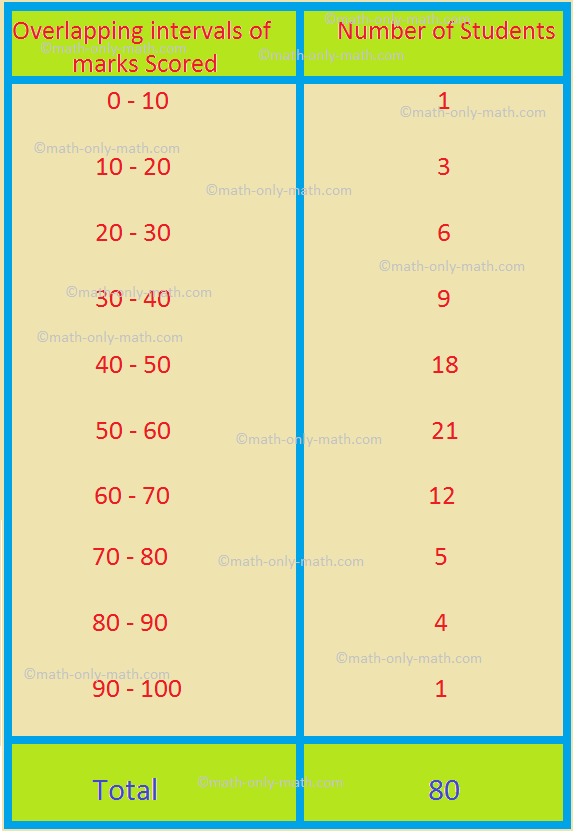

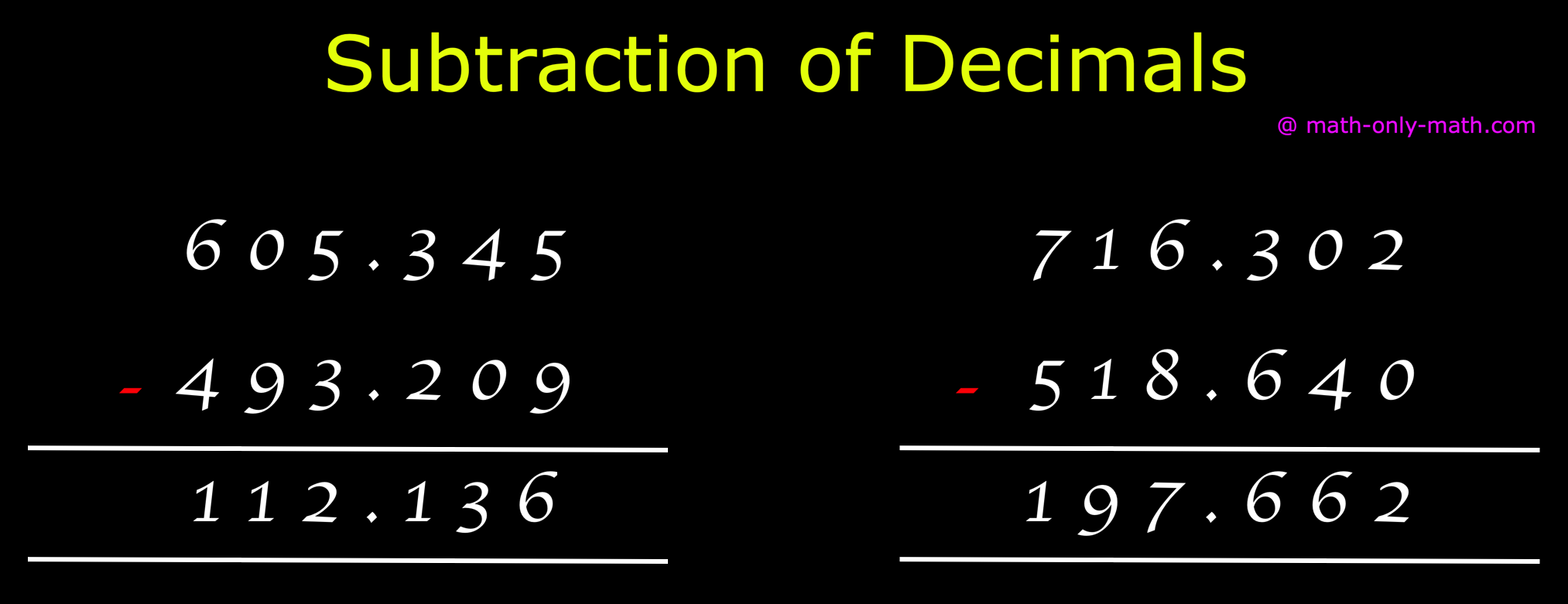
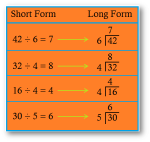
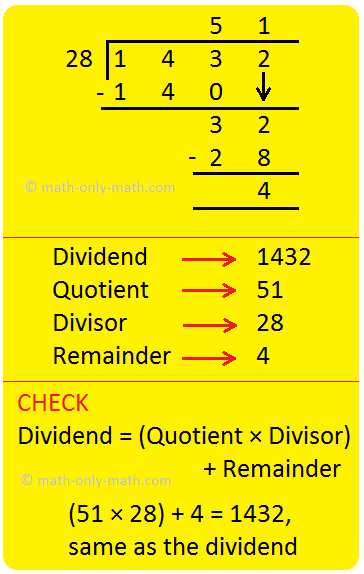

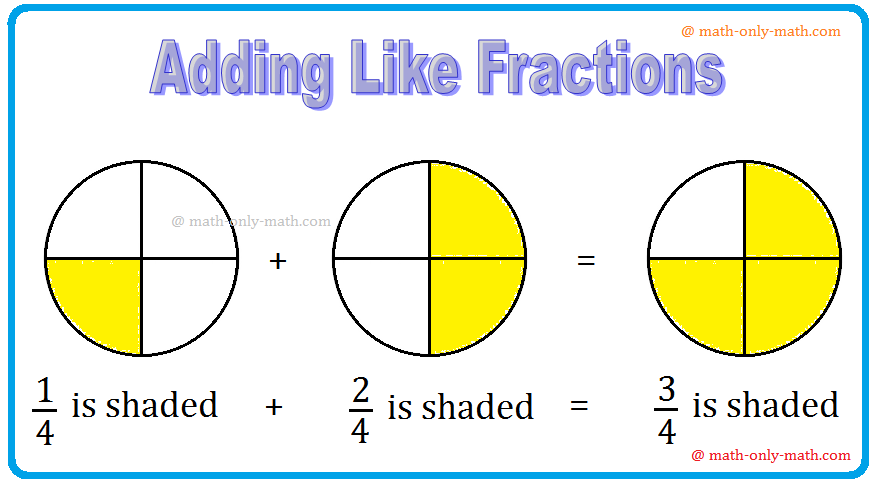
New! Comments
Have your say about what you just read! Leave me a comment in the box below. Ask a Question or Answer a Question.